We Might Have Just Seen the World's First Anti-Ship Ballistic Missile Attack
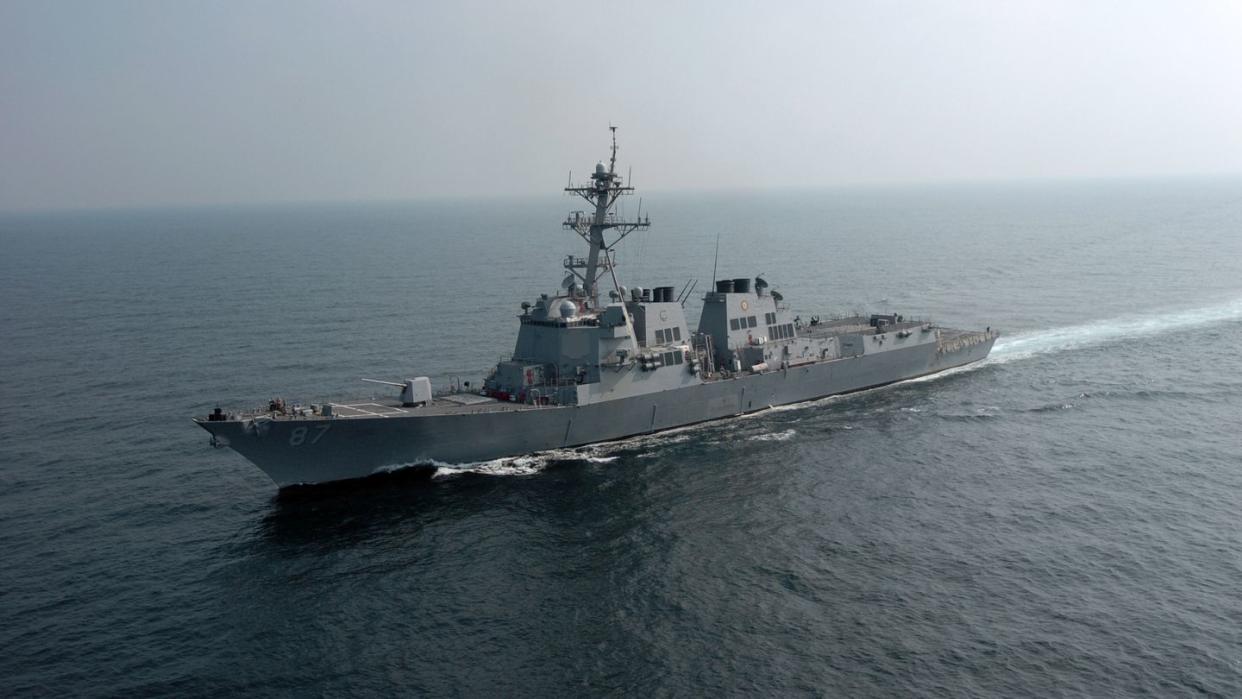
U.S. Navy destroyer Mason (DDG-87) was wrapping up a mission rescuing a tanker from pirates in the Gulf of Aden when the situation sharply escalated. The ship’s radar detected at least one—or possibly two—missiles moving toward its position at supersonic speeds, each loaded with well over a half-ton of explosives.
The day before, Liberian-flagged tanker M/V Central Park—stuffed full of phosphoric acid—had issued a distress call after reportedly being boarded by unknown armed assailants 35 miles south of Yemen’s coast and 50 miles east of Djibouti. Central Park’s crew of 22 took shelter in the vessel’s ‘citadel’, an armored panic room.
Following a surveillance run by a Japansese P-3C maritime patrol plane, Mason and Japanese destroyer Akebano (a smaller Murasame-class general purpose destroyer) intercepted the hijacked tanker and demanded that the invaders decamp.
Five pirates with Kalashnikov rifles and a motor boat had little chance against Mason—a Flight IIA Arleigh-Burke-class guided missile destroyer bristling with 96 missile-launching cells, two MH-60R Seahawk helicopters, and rapid-firing cannons large and small. So, they fled Central Park on their boat headed for Yemen, only to be chased down by one of Mason’s helicopters and compelled to surrender.
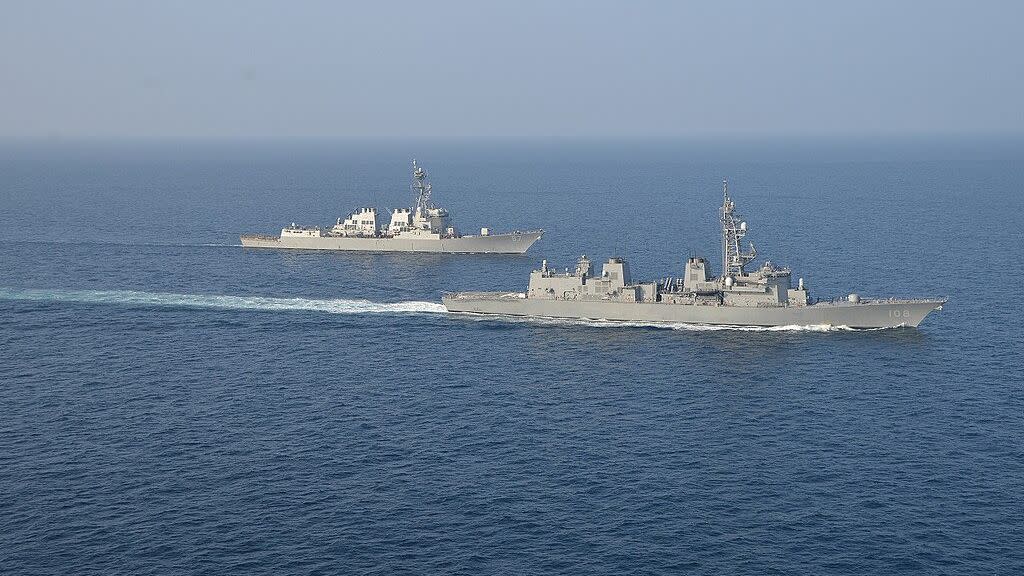
But a potentially more serious threat was brewing dozens of miles of away, ashore in Yemen. At around 1:41 AM, one or two truck launchers (situated in territory controlled by Iran-backed Houthi rebels) erected their weapons into firing position and launched a missile arcing high on a ballistic trajectory towards the “general position” of Mason, Akebano, and Central Park.
Since the outbreak of conflict between Hamas and Israel in October, the Houthis have launched dozens of missiles and kamikaze drones at Israeli and U.S. targets in a show of support for Palestine. A combination of U.S. Navy ships, Saudi fighters, and Israeli air defenses prevented any from reaching their target. The Houthis then explicitly threatened to sink Israeli-associated shipping near Yemen’s coast on November 14, and proceeded to hijack cargo ship M/S Galaxy Leader using an Mi-17 helicopter on November 19.
Central Park seemed likely to have been targeted as an asset of Zodiac Maritime, linked to Israeli shipping magnate Eyal Offer. And indeed, it was reportedly running with its AIS safety transponder off to be less easily targeted. However, the Pentagon later assessed that the attackers it detained were Somali pirates, not politically-motivated Yemeni militants.
The Houthis had already repeatedly and unsuccessfully sniped at Mason seven years earlier using anti-ship cruise missiles, which approach their targets at lower altitude and (usually) lower speed. Two missiles on October 9, two more on October 12, and five missiles on October 15 all failed to hit the mark—either lured away by a mix of radar and infrared and advanced Nulka decoys or shot down by SM-2 and Evolved Sea Sparrow air defense missiles.
But the weapon(s) fired toward Mason that morning were ballistic missiles—and potentially anti-ship ballistic missiles (ASBMs), a type of weapon never before used in combat.
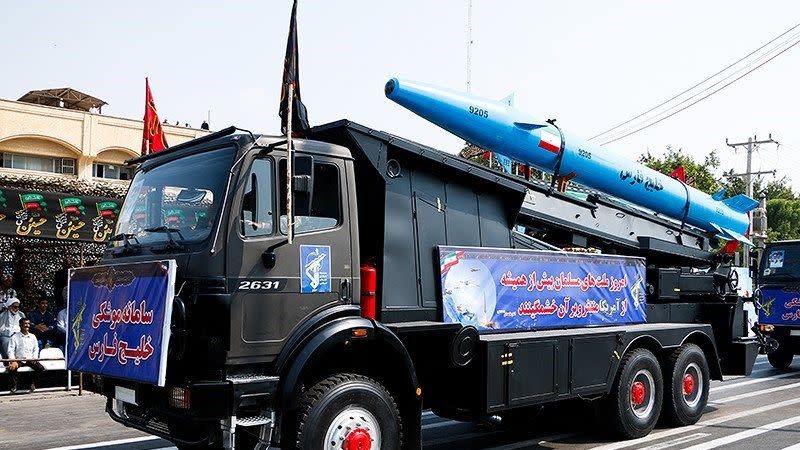
If so, it’s likely that the Houthis employed Iranian-built Khalij Fars (“Persian Gulf”) ASBM, or a domestic spinoff. The nearly 9-meter-long Khalij Fars attains a peak speed of 40 to 50 miles per minute (Mach 3 or 4) and a maximum range of 186 miles. Back in 2022, the Houthis paraded an ostensibly indigenous 10-meter-long Aasef (or Aasif) missile that closely resembled Khalij Fars, with a supposed range of 250 miles, a diameter of 700-millimeters, and a 1,212-lb. warhead.
Additionally, the same 2022 parade included the smaller, 6-meter-long Falaq-1 ASBM. The Falaq-1 ASBM also closely resembled Khalij Fars, but with the range reduced to 140 miles, and the warhead reduced to 231-pounds.
"Al-Falaq 1", anti ship ballistic missile, at the Houthi parade in Yemen. It is another member of the Iranian missile family, a scaled down Fatah-110, and we saw it in Iran as "Fajr 4CL", with EO seeker. pic.twitter.com/cdlzYy3UP0
— Tal Inbar (@inbarspace) September 3, 2022
Thus, the Mason and Akebano had, at most, a few minutes to prepare a response after being informed of the missile’s approach by U.S. military radars.
Akebano, with its smaller air defense armament, reportedly veered sharply southward, accelerating to its maximum speed of 34 miles per hour to evade. It’s unclear if Mason’s skipper—Commander Matthew Erdner—did likewise, or if he employed any of the ship’s numerous air defense weapons or countermeasures to defeat the incoming missiles.
Either way, it’s been confirmed that one missile splashed harmlessly into the Arabian Sea—11.5 miles away from the Mason, 11 miles from Akebano, and 5.75 miles away from Central Park.
Another reportedly “blew up in midair”—though, on Tuesday, Pentagon press secretary Brig. Gen. Pat Ryder would only confirm that “at least one missile” had been fired. He also stated that “at this point we assess that the vessels, the Mason and the Central Park, were not the intended targets.”
Perhaps the Houthi attack was not really intended to hit, so much as to serve as a symbolic ‘shot-across-the-bow.’ It could have even involved regular ballistic missiles assigned to a fixed coordinate at sea, rather than guided anti-ship missiles.
Alternately, the Houthis may have attempted an actual ASBM attack on another vessel that they believed to be in the area, or even the Akebano (which was left unmentioned in the Pentagon statement). Or, the attack could have involved regular ballistic missile(s)—ones that were flying southbound and overshot a target on Yemen’s southern coastline (controlled by the rival Southern Transitional Council faction), thus landing in the Gulf of Aden.
The Pentagon may also have escalation-management reasons for downplaying what otherwise looked like a failed attack. It’s worth recalling that, following a skirmish between U.S. warship and Vietnamese boats in the Gulf of Tonkin in 1964, radar returns seemingly report a new attack by Vietnamese boats that was used to justify escalating U.S. intervention in the Vietnam War. These returns were later assessed to have been technical errors.
Why anti-ship ballistic missiles are so tricky to employ
For now, it remains unclear what was targeted in Monday’s attack, and which kind of ballistic missile was used. But if the volley involved an anti-ship ballistic missile, it would mark the first tentative shots of a new era in naval warfare—one in which ships at sea must not only guard against torpedoes and surface-skimming missiles, but also ballistic missiles launched from distant shores and plummeting down from beyond the Earth’s atmosphere.
Cruise missiles, the reigning mainstay of modern anti-ship warfare, are essentially a kind of expendable drone airplane. A ballistic missile, in contrast, behaves more like a rocket ship and has much less ability to maneuver. However, the most powerful ballistic missiles can exit the atmosphere and travel tremendous distances at ridiculous speeds, making them very difficult to intercept without specialized defenses.

Ballistic missiles are usually launched from land-based silos, trucks or submarines (and much more rarely, ships or high-flying aircraft). And since their first combat use by Nazi Germany in World War II, their operational use has been reserved for striking land targets.
Despite their potential to inflict devastating damage, ballistic missiles have always faced a major problem against ships at sea: ships are relatively small targets compared to a city or sprawling military base. And they move—typical U.S. destroyers are able to attain flank speeds exceeding 35 miles per hour (30 knots).
By the late 20th century, new ballistic missiles began approaching the ‘within-a-few-meters’ level of precision needed to reliably hit ship-sized targets. But the moving problem was still very much in existence. Ships still need to be found amidst the vastness of the sea, and there are significant technical and organizational challenges to forming a “kill chain”—one which connects the reconnaissance assets that detect and pinpoint enemy ships to the missile-carrying platforms capable of actually shooting at those targets.
Had the Houthis intended to target Mason or Central Park—contrary to the Pentagon’s assessment—they would have had more time to establish the kill-chain as Mason lingered near a possibly immobilized Central Park to assist in her recovery.
But even with a kill-chain established, how can the attacker ensure that the targeted ship will remain within the predicted ‘kill zone’ for the missile’s seeker to lock on to? What if, instead, the ship changes speed or swerves sharply in a different direction (an especially likely development once the ship’s radar detects the approach of an ASBM)? That’s exactly the kind of evasive maneuver Akebano performed as the missile approached.

Solutions for these challenges include developing a seeker with a large ‘kill zone’ that’s harder for a ship to exit. One might also ensure that a spotter (typically an airplane, drone, submarine, etc...) can monitor the movement of the targeted ship and transmit midflight course corrections to the missile by datalink, making certain that the ship remains in the kill zone by the time the missile begins its terminal plunge.
Khalij Fars is described as relying only on internal inertial navigations systems for the midflight phase, which could mean that it lacks the ability to receive course corrections. And given the fact that it and other Houthi spinoffs are likely on the cruder end of existing ASBM technology, the kill zone of their electro-optical seekers may not be especially large.
Perhaps the Houthi kill-chain wasn’t fast or precise enough, and anti-ship missiles were targeted at a third vessel which was no longer there. They may also (hypothetically) have been aimed at Mason’s or Central Park’s position, but without the necessary timeliness or precision for their seekers to pick up on the ships by the time the missiles arrived. Additionally, in the event of a genuine attack, Mason could have artfully dodged (as the Akebano did) by seeking to exit the seeker’s kill zone at maximum speed after detecting the missile’s approach.
Other defensive measures could include optical decoys, or electronic warfare capabilities used to transmit false midcourse guidance instructions to the missile and send it off target—though that would depend on Khalij Fars having a capability to receive and execute midcourse corrections in the first place.
And, of course, there remains the possibility that the missiles weren’t launched with the intent to hit ships at all.
But what if the Houthi missiles had locked onto Mason or Central Park? Then, the Mason’s crew would have faced an unprecedented threat—but not one they weren’t prepared for. China’s development of the DF-21D missile garnered much attention—it was even noted in an episode of the The Office—and in the 2010s, the Navy began deploying a spectrum of new air defenses with anti-ballistic missile capability.
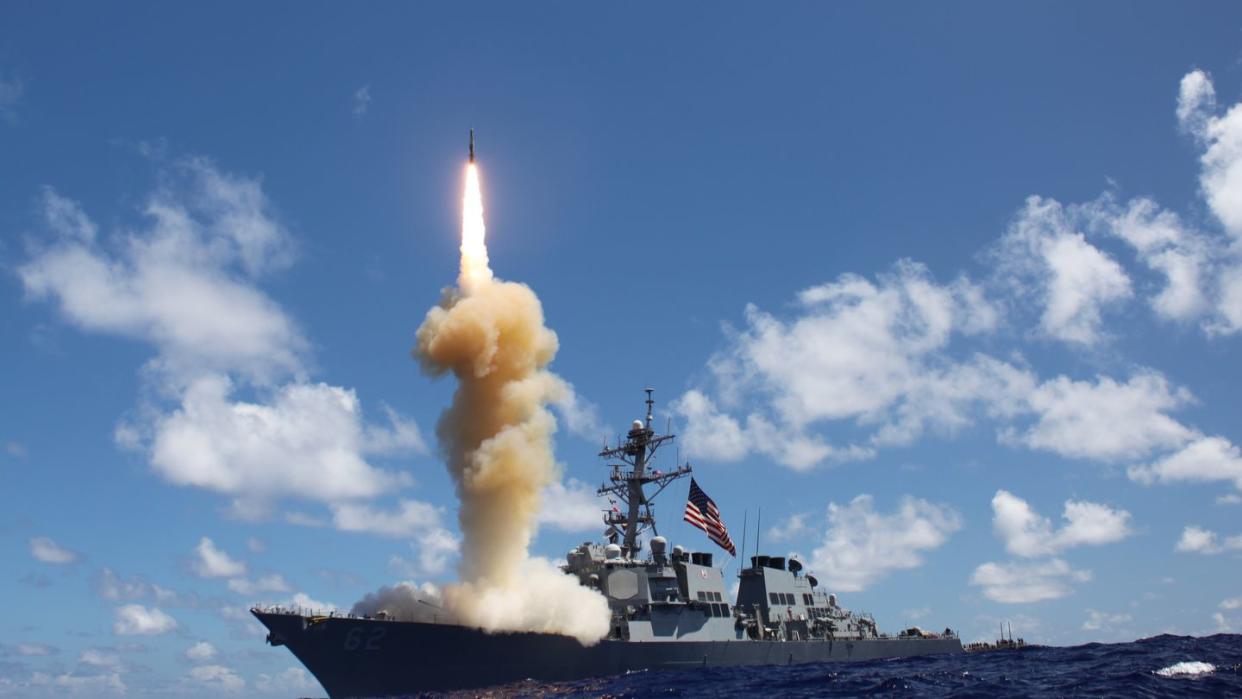
These include the very powerful SM-3 (capable of defending large areas), the speedy SM-6 multi-role missile, and the SM-2ER Block IV. Even the Navy’s short-range missile defenses—RIM-67 Evolved Sea Sparrow medium-range missiles (which can be quad-packed into a destroyer’s missile cells) and RIM-116 SeaRAM launchers bolted onto non-destroyer platforms—can provide a degree of protection.
Mason carried a mix of the above multi-layer weapons, while Akebano had only short-range Evolved Sea Sparrows and guns for close protection.
Given the challenges of successfully employing anti-ship ballistic missiles in general—and the challenges of attacking a U.S. Navy destroyer in particular—a failed attack wouldn’t be surprising. This is particularly true in the case of the Khalij Fars, for which performance claims fall well below the DF-21D, which may have over three times the estimated maximum speed (estimated Mach 10) and range (930 miles).
With the ambiguity surrounding the midair destruction of one of the Houthi missiles, it’s unclear whether these multi-layered systems have seen their first test in real-life combat or not.
Iranian and Houthi Anti-Ship Ballistic Missiles
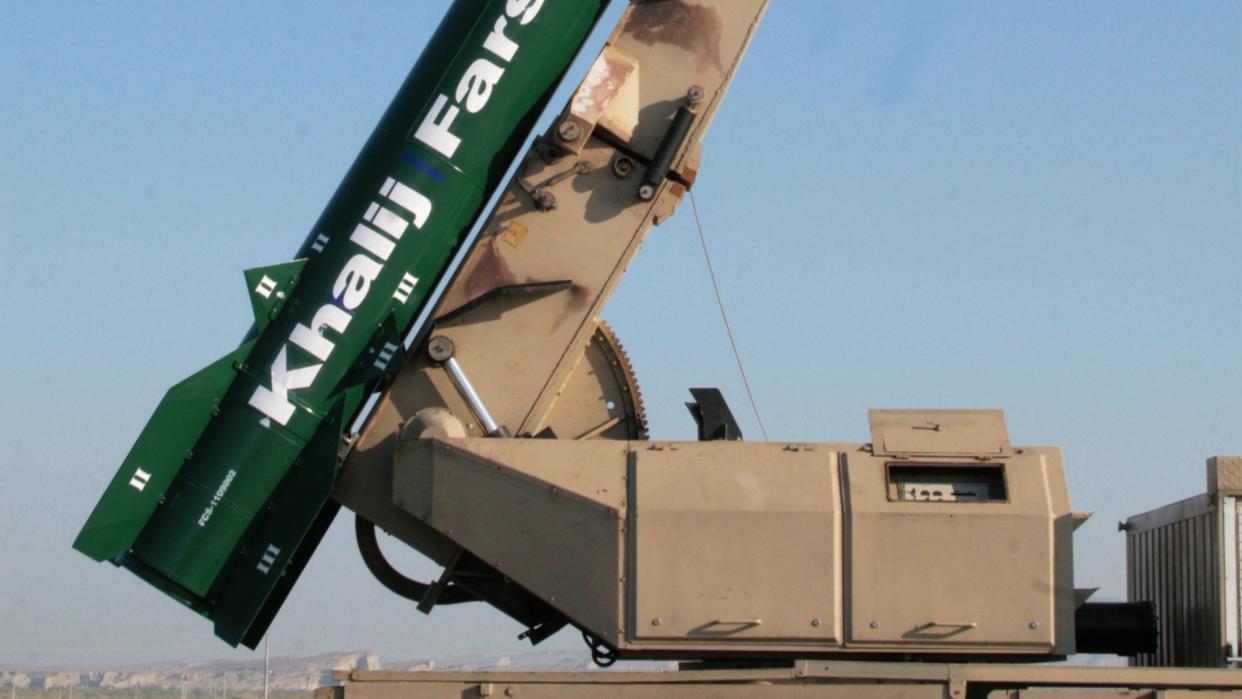
Khalij Fars is an outgrowth of Iran’s successful family of Fateh-110 solid-fuel short-range ballistic missiles, which has evolved over the years to achieve greater range and respectable degrees of precision. It’s been extensively used by Tehran for ‘punishment’ strikes on targets across the Middle East, including a notorious January 2020 attack on U.S. bases in Iraq.
The Khalij Fars anti-ship variant entered service in 2011, and in 2013, allegedly successfully hit a moving 8-meter-wide maritime target in an exercise, improving on its initial average 30-meter average error.
The Houthi Aasef missile (seen in video below at the 1 hour 32 minute mark) appears to be a stretched Khalij Fars with modestly greater range. Meanwhile, the Falaq-1 looks like a ‘baby’ version of the same (see video here.)
But the Houthis have paraded several other supposedly indigenous ASBMs around. These include the Red Sea ASBM (based on the Saeer ballistic missile), which is reportedly compatible with a radar as well as thermal seeker, and an anti-ship variant of the Tankeel ballistic missile (based on the Iranian Ra’ad-500) with a range of 310 miles and max speed Mach 8 (on video here).
The group has also converted some of Yemen’s inventory of old Soviet V750 missiles, used by S-75 air defense systems, into a two-stage ASBM dubbed the Moheet that is distinguished by the distinctive ‘bubble nose’ that housing the thermal seeker used for navigation and terminal guidance. This article has screenshots of both Moheet and the Red Sea missile.

Iran, meanwhile, has also developed newer ASBMs that it could have transferred (in part or in whole) to the Houthis. That includes the Hormuz-2 anti-ship anti-radiation missiles designed to home in on the powerful active radar emissions of a warship. The home-in-on-radars guidance method could prove more effective than optical targeting in many scenarios, but in turn, it can be affected by electronic warfare countermeasures or by turning off the ship’s radar (admittedly, a risky tactic). Hormuz-2 closely resembles, and is believed to have similar range and speed to, the Khalij Fars.
Iran’s longer-reaching Zolfaghar and Emad missiles have also allegedly been fitted with a seeker for anti-ship attacks. The latter’s Zolfaghar-e-Basir model, unveiled in September of 2020, has an optical seeker and supposed maximum range of 435 miles.
The Emad has a range of around 1,100 miles, and features a maneuverable re-entry vehicle that could aid in the course corrections needed to hit a ship. It’s alleged to have a hit a naval target in the Indian Ocean in January 2021’s Great Prophet 15 military exercise.
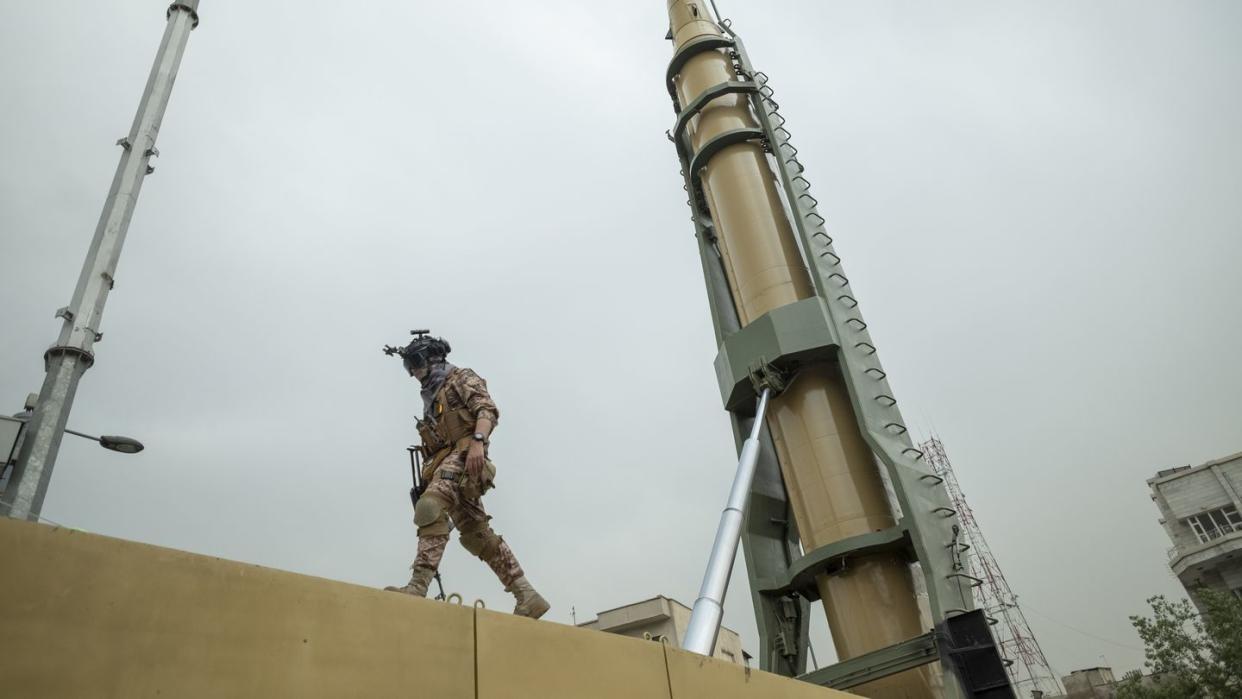
One should bear in mind that the theoretical range of Houthi and Iranian ASBMs do not necessarily equate to their practical effectiveness in a real-world operations—again, rapidly forming sensor-to-shooter kill chains in unplanned circumstances is hard, even for very well equipped navies. And the missed attack on Mason may foster speculation, merited or not, that the seekers on Iranian ASBMs may be too limited to successfully engage non-cooperative targets performing evasive maneuvers and protected by air defenses.
Yet, the Houthi attack also serves as a warning that the era of ballistic missile warfare against ships at sea has begun (or could begin soon), and there’s no guarantee that future attacks will fall so wide of the mark. While some technological innovations do prove impractical once combat tested, others (like tanks and aircraft carriers) had awkward beginnings before evolving into dominant war-fighting machines.
You Might Also Like
